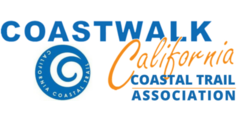“There is no public health risk at California beaches due to radioactivity related to events at Fukushima . The California Department of Public Health (CDPH) is not aware of any recent activity at Fukushima, or any new data that would cause elevated radioactivity on California shores from the Fukushima incident. Recent tests by the San Mateo County public health department and CDPH show that elevated levels of radiation at Half Moon Bay are due to naturally occurring materials and not radioactivity associated with the Fukushima incident.
The volume of water in the Pacific Ocean has a significant diluting effect on radionuclides that are present and it is not anticipated that the concentration will increase in the waters off of the west coast. CDPH has collected and will be analyzing sand samples from Half Moon Bay. Results of the analysis will be posted on the CDPH Radiologic Health (RHB) website (http://www.cdph.ca.gov/programs/Pages/RHB-RadReport.aspx) as soon as the analysis is completed.”- California Department of Public Health Radiologic Health Branch, January 10, 2014
Other information:
CDPH also performs routine air and milk samples as required by California law. Slightly elevated air and milk samples were found during the initial phases of the Fukushima incident (March 2011) and the results were reported on CDPH RHB’s website (see link above). CDPH continues to monitor air, milk, kelp, and fish samples. CDPH’s monitoring is part of its on-going environmental monitoring program and will be publishing data on the CDPH RHB website by the end of this week.
CDPH has been in contact with the U.S. Nuclear Regulatory Commission (NRC) and they are monitoring the situation with the nuclear reactors in Japan. The FDA as well as the private entity Woods- Hole Oceanographic Institution (WHOI) have monitored fish from the Pacific and while minute levels of cesium were found in blue fin tuna most recent tests show even those small levels are declining. The United States Environmental Protection Agency (USEPA) is the coordinating Agency for response to international emergencies involving radioactive materials and the FDA is responsible for food safety. FDA’s hotline number is 888-723-3366. The USEPA, via their RadNet system, monitors the nation’s air, drinking water, precipitation, and pasteurized milk to determine levels of radiation in the environment. RadNet sample analyses and monitoring results provide baseline data on background levels of radiation in the environment and can detect increased radiation from radiological incidents, such as the Fukushima incident. You may visit the USEPA RadNet website at http://www.epa.gov/radnet/ and this site has a link regarding public questions.
Some additional useful links:
The National Oceanographic and Atmospheric Administration (NOAA) addresses threats to coastal areas. You can see information about their tracking of debris from Japan http://marinedebris.noaa.gov/tsunamidebris/
The International Atomic Energy Agency (IAEA) provides publically available reports on leakage and sea water radioactivity near the Fukushima Daiichi plant. The last report can be found at: http://www.iaea.org/newscenter/news/2013/japan-basic-policy6.html
The state of Oregon continues to test drinking water, rain water and sea water for radionuclides that could be associated with Fukushima. https://public.health.oregon.gov/HealthyEnvironments/RadiationProtection/RadiationMonitoring/watermonitoring/Pages/waterdata.aspx
